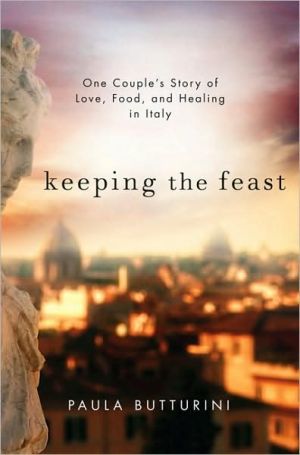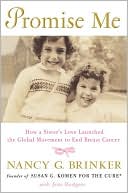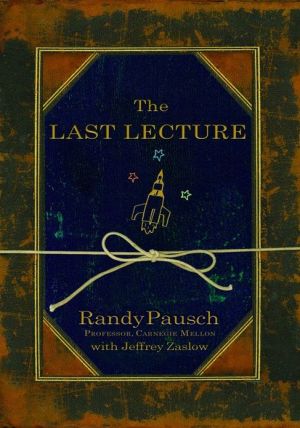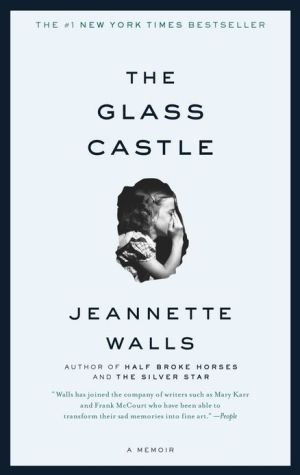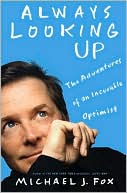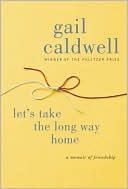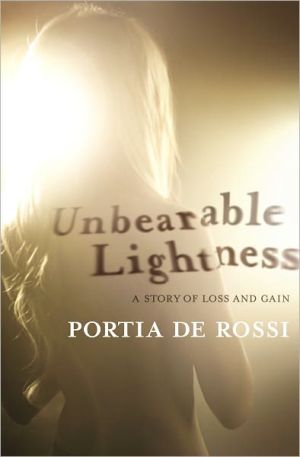Keeping the Feast: One Couple's Story of Love, Food, and Healing in Italy
A story of food and love, injury and healing, Keeping the Feast is the triumphant memoir of one couple's nourishment and restoration in Italy after a period of tragedy, and the extraordinary sustaining powers of food, family, and friendship.\ Paula and John met in Italy, fell in love, and four years later, married in Rome. But less than a month after the wedding, tragedy struck. They had transferred from their Italian paradise to Warsaw and while reporting on an uprising in Romania, John was...
Search in google:
A story of food and love, injury and healing, Keeping the Feast is the triumphant memoir of one couple's nourishment and restoration in Italy after a period of tragedy, and the extraordinary sustaining powers of food, family, and friendship. Paula and John met in Italy, fell in love, and four years later, married in Rome. But less than a month after the wedding, tragedy struck. They had transferred from their Italian paradise to Warsaw and while reporting on an uprising in Romania, John was shot and nearly killed by sniper fire. Although he recovered from his physical wounds in less than a year, the process of healing had just begun. Unable to regain his equilibrium, he sank into a deep sadness that reverberated throughout their relationship. It was the abrupt end of what they'd known together, and the beginning of a new phase of life neither had planned for. All of a sudden, Paula was forced to reexamine her marriage, her husband, and herself. Paula began to reconsider all of her previous assumptions about healing. She discovered that sometimes patience can be a vice, anger a virtue. That sometimes it is vital to make demands of the sick, that they show signs of getting better. And she rediscovered the importance of the most fundamental of human rituals: the daily sharing of food around the family table. A universal story of hope and healing, Keeping the Feast is an account of one couple's triumph over tragedy and illness, and a celebration of the simple rituals of life, even during the worst life crises. Beautifully written and tremendously moving, Paula's story is a testament to the extraordinary sustaining powers of food and love, and to the stubborn belief that there is always an afterward, there is always hope. The New York Times - Mika Brzezinski …blunt and brave…Keeping the Feast shares with Julie Powell's Julie & Julia and Elizabeth Gilbert's Eat, Pray, Love the insight that food can jump-start a journey toward solace. Can food cure clinical depression? Of course not. But the act of cooking and eating together—of keeping the feast—bolsters Butturini, and she in turn keeps Tagliabue alive. The real glue in this marriage scarred by tragedy is not Butturini's cooking but Butturini herself.
1 Hungers\ Some mornings, beginning in March, I wake up hungering for green asparagus. It is a grown-up hunger, for I don't remember asparagus cravings before I was twelve or thirteen, when my father learned to braise them in butter under three or four leaves of dripping wet lettuce. The lettuce, lightly salted, would wilt, then give up a mild, sweet juice in which the asparagus would steam. When they were done and my father lifted the lid, a cloud of vegetable essence would fill the entire kitchen. My mother would sigh in delight at the smell of it, and even my brother, five or six at the time and still finicky in his appetites, would devour them. On those days, our hunger for asparagus was boundless.\ Decades later, sudden unshakable hungers still seize me throughout the year. In winter, it might be a craving for baby artichokes, braised in olive oil and mint, eaten barely warm. In spring I often crave strawberries—the smaller, the better—sliced over a mound of fresh ricotta. In summer I long for figs, or tomatoes, their juices still warm from the sun. In fall, I want and need a fat persimmon, quartered, opened up like a flower, sprinkled with lemon juice and eaten slowly, with ceremony and a spoon.\ My maternal grandmother's Neapolitan soul knew and respected these sudden cravings. She called them voglie, an Italian word that can mean anything from wishes, wants, and desires to longings, fancies, or whims. But when Jennie Comparato used the word in Bridgeport, Connecticut, in the 1950s she meant only one thing— those deep, impulsive hungers for some special seasonal feast. The word is properly pronounced VOHL-yay, with the accent on the first syllable. But all of us in the family, none of whom had ever been to Italy, heard it rather differently. "Wool-EEE" is what we used to say, Americanizing it beyond recognition. We changed the v to a w, we changed the sound of the o, we accented the last syllable instead of the first.\ "I've got the wool-eee for a cream cheese sandwich on date-nut bread," my mother might sigh on a particularly bleak Saturday morning in late January when she was convinced spring would never come again. If her wool-ee was serious, she would slap on lipstick and a hat and order me out of my flannel-lined dungarees and into a hated hand-me-down skirt. She would pop me into the backseat of the Olds and drive us downtown. There, in a wood-paneled bakery and sandwich shop called Harkabus, she would satiate her desire, sighing in quiet joy at her first bite, as if that mixture of brown bread and white cheese could coax the bare magnolia in the front yard into early bloom. I never shared her enthusiasm for that particular sandwich, and she never thought to press it. Wool-eees were personal, and though best when shared, could not be coerced. She satisfied her soul her way and I took care of mine, with bacon, lettuce, and tomato on toast, the mayonnaise carefully scraped off .\ Jennie and the entire Comparato clan— she had seven brothers and sisters, four half brothers and half sisters— took wool-eees seriously, never mocking or ignoring these often inexplicable desires. When a wool-eee erupted, they knew the stomach was speaking. And the stomach, in our family, was to be listened to attentively, not just blindly fed. In our family the stomach was only slightly less important than the brain, and according to my mother, clearly more trustworthy and often more intelligent. I was not quite sure what she meant by those words nor by the fierceness of the tone she used when uttering similar pronouncements, all of which ended with a look into my eyes and the same tag line: "That's life— better get used to it."\ I thought at the time, and for many, many years, that she was talking to me when she made those pronouncements that sounded so wise and so certain. Later I understood that she was talking mainly to herself. At any rate, by age six or seven, I knew wool-eees bespoke nourishment and need, both of body and of soul. I knew they transcended mundane treats. Neither body nor soul could ever pretend to require a Hostess Snowball, a lemon Popsicle, or an Almond Joy.\ When I first moved to Rome, in my early thirties, it was the abundance of Roman voglie that made me feel welcome, almost as if I'd moved home. Romans have voglie for all manner of edible things. They are sometimes tied to the days of the week, like the need for potato gnocchi on Thursdays, or for thick pasta and chickpea soup, with rosemary and dried red pepper, on Fridays. They are sometimes tied to hours of the day, such as a craving for spaghetti aglio, olio, e peperoncino late at night or for a piece of warm pizza bianca on the way home from school. They are often tied to seasons of the year, when the body instinctively knows what it needs to eat, such as a mountain of midwinter spinach, barely warm and drizzled with olive oil and lemon; for ricotta in spring, when the cows and ewes produce their sweetest milk; for deep platters of mussels in white wine and garlic, all you can stand on a broiling summer night; for a brown paper cone of roasted chestnuts in November, just off one of the battered braziers that appear on street corners when cooler weather finally sets in.\ Each year my own wool-eees grow stronger, as if by being satisfied they are heightened instead of diminished. It makes a certain sense, for if we are charmed once, and charmed again by repeating the performance, our memories hold the weight of both. So it is that toward the end of each succeeding winter, I need asparagus even more than I needed it the year before.\ These days I find myself willing local asparagus into the market even before it is ready for harvest. By the time they actually arrive, I can almost taste them. But it is not just the taste I crave. I hunger as much, perhaps even more, for what their seasonal appearance signals: that the dark and cold and death of winter is about to yield to the sun and heat and promise of spring. I hunger then for their springy green color, for the sharp crack they make when I snap off the bottom of a muddy, fibrous, white-tipped stalk. I hunger, too, for the sight of them in an orderly, buttered mound, their sweet, blunt tips all pointing in the same direction, lying on a thick white pottery platter and covered with freshly grated Parmigiano-Reggiano cheese. I even hunger for the proof I have eaten them, for asparagus is the only vegetable I know that produces a vegetal, acrid smell in pee. I hunger, too, for that cloud of asparagus-lettuce perfume that used to fill our kitchen when I was twelve or thirteen, and the four of us ate them, happily.\ In Rome, when I needed and wanted and simply had to have asparagus, I walked to Campo dei Fiori early to choose the pick of the lot. They would be standing upright on Signora Maria's crowded vegetable stall, wrapped in green-and-white paper, as if they were flowers, secured with a thick green rubber band so that only the fat tips showed. Back home, I would snap off the woody bottoms where they themselves knew to break. I would wash off the grit, then wish I didn't have to wait till dinner. Sometimes, if that wish was very strong, I didn't. I boiled a few right then and cooked them gently with a beaten egg to produce a filched asparagus frittata, which tastes better than anything, probably because its main ingredient has been stolen, for hunger's sake.\ The first few times each season, I want them whole, with a bit of butter melting over them and lots of freshly grated Parmigiano. If John is traveling, I may balance my plate on my knees while sitting on my favorite stool, and this private kitchen picnic will be as satisfying as any proper meal at a well-set table. If John is in town, we'll sit at table, the platter between us, and stalk by stalk contentedly share my winter-to-spring wool-eee. Later in the season, for variety, I may dribble a bit of good green-gold olive oil over them while they are still warm. Just as I am about to eat, I squeeze a wedge of lemon over them, and the lemon oil gets into the skin of my fingers and into the air, and the lemon juice rides in droplets atop the olive oil, and the sweetness of the asparagus mingles with the oil and juice. It is a private, heady potion, my own call to Persephone to summon spring.\ When I no longer need to eat them whole, I chop them into bits and pieces to turn them into spring's best risotto, using the asparagus water in which the stalks are first cooked as a mild, sweet broth that both colors and flavors the rice. It is a vegetable tonic, helping the body and mind make that longed-for but always difficult change of seasonal gears from darkness to light. In our house, risotto is always served from a large, deep oval platter, just as it appeared on the mahogany dining table in Jersey City when John was a boy. Risotto served from a bowl or from a flat, round plate doesn't taste right to him. When I appear with a platter of asparagus risotto, the color of the soft green cloud that hovers over a tree just before it bursts into leaf, neither of us is craving just the simple ingredients that went into the pot. For me, every forkful is like each bite my mother took from her cream cheese sandwich: a reassurance that winter will, in fact, finally end. For John, I think, each taste satisfies his longing for all the Tagliabues who ate supper together in the two-family house on Columbia Avenue, for Mother and Daddy; for the older boys, Charles, Robert, and Paul; for Aunt Julia, who never married; for Upstairs Grandma, who used to sing softly and absently for hours as she sat in her kitchen just above theirs.\ When we returned to Rome after our years away, we arrived with another sort of craving, a hunger for normalcy, a wool-eee for some sort of old-fashioned cure. The treatment we sought, unconsciously at first, centered on food. Not fancy food or chichi restaurants, not the latest food fads or expensive ingredients. Just the magic of honest food— fresh and wholesome—simply prepared and eaten together three times a day, from ingredients that Italians have largely been eating for millennia. Italy still celebrates one of the most primordial rituals of the human community, the daily sharing of food and fellowship around a family table. What better place to take ourselves to heal?\ Even before the troubles began raining down, we had begun to paint Italy as a haven, a refuge, the place to recover from too much work. John was the Warsaw bureau chief for The New York Times, I was the Eastern European correspondent for the Chicago Tribune. Each summer, nearly played out, we would collect John's children, Peter and Anna, from Germany and return to the same magical house on the steep, scrub-covered hills in Trevignano Romano, a quiet village that overlooks Lake Bracciano, an hour's drive north of Rome.\ We used to arrive, pale and wan, craving the sun, the heat, the food, the wine, the daily Monopoly games, the hours of reading, the afternoon swims, the naps on the beach, the nightly stroll on the lakeside promenade with ice cream dripping off our cones. We craved the trumpet vines that surrounded our bedroom windows and the cosseting of our older friends, Ann and Joseph, who had built two simple houses on the land, to use as a weekend retreat from the daily chaos of life in Rome. After three blissful weeks in Trevignano, we would leave tanned and rested, nearly restored. The best years, we arrived at the height of fig season, when a neighbor would leave enormous wicker baskets of green-gold figs on our back steps. Anna, seven or eight then, and I would stand around the basket and devour them, three and four at a go—our luggage, even the lake, forgotten. Nothing seemed to banish our hungers more than those meltingly soft figs oozing the thick, honeyed juice of an Italian summer.\ After the troubles started, then multiplied and multiplied again, we stubbornly tried to keep to our ritual summer cure.\ We flew to Rome, met the children, and drove back up to the lake. There were no fat figs on the steps that summer, though. The neighbor who had always welcomed us with the fruits of her tree had died suddenly, shortly before we arrived.\ Even if I try to list the troubles simply, objectively, without elaboration, without a frame, I still sound to myself like one of those thin, nervous women—their lips working, their eyes not meeting the camera—who used to appear on Queen for a Day and tell their tales of woe. The woman with the most pitiful story and the most copious tears won the crown and the fur-trimmed robes. She won the long- stemmed roses, and maybe a refrigerator or some big cash prize. Under the crown and the robe, the winners would sob and laugh, cry and dissolve before the whirring camera. I watched that show with horror as a child, seeing grown-up terrors of loss and suffering paraded across the little octagonal screen of our first television set. It was a peculiar show for its time, oddly un-American, designed to reward trouble, to let a loser win. But I kept my horror of it well hidden, knowing the show would be forbidden if I let on how terrified it left me. I hated to watch it but hated to miss it, afraid this key to the grown- up world of troubles and fears might get away from me. If I watched, took in, and learned its secrets, maybe I could be ready for the adult terrors that obviously were waiting to be grown into, just like the bulky winter coat bought cheap at the end of the season for the following year's wear.\ The troubles that, in fact, were waiting started in Prague on November 17, 1989, the first night of what later came to be called the Velvet Revolution against the country's Communist leaders. Czechoslovak anti terrorist police waded into a peaceful crowd of student demonstrators and beat everyone in reach. I was there to report on it and they beat me unconscious in the street, then dragged me off with a colleague who had tried to intervene, hauling us into a building entryway, where they could continue to beat us, with impunity and without witnesses.\ Five weeks later it was John's turn. Two nights before Christmas, a sniper hiding in the darkness of a city street in Timisoara, Romania, fired at the two-door Peugeot in which John was riding, shattering the car windows, tearing through doors, dashboard, seats, trunk, engine, and roof. The car was demolished, but neither the Frenchman at the wheel nor the two other Americans in the backseat were hit. John was struck by only one bullet, which he remembers "scurrying like a mouse" across his entire middle before he passed out.\ I know that a riot stick connecting with a human target makes a sharp thwacking sound when it hits a skull, and a slightly muffled, duller thwock when it hits flesh. I know that hundreds of shiny white plastic riot sticks catch and reflect streetlamps as they whoosh and flail like crazed metronomes in cold night air. I know what a gunshot sounds like. But I wasn't there when John was shot, so I can only wonder about the specifics of the scene. Was there a flash of white light when the sniper squeezed the trigger? Or maybe just a dirty yellow spark? I'd like to know if the bullet was spit out with a spike of blue smoke, or whether a puff of gray fume wafted lazily up into the December night. Had I been standing hard by, would I have heard the bullet cut the air? Would it have whined or screamed or whispered or made no sound at all?\ I needed fifteen simple stitches to close the two long gashes in my head and a couple of weeks for my hugely swollen face to look again like mine. Had my beating been the sum of it, I probably would have nursed a longtime fear of uniformed men wielding riot sticks, but would have few other lingering concerns. But a bullet that pierces a car door, a parka, a sports coat, a sweater, a shirt, trousers, and underwear— a bullet that splits a belt in two, then chews its way across a body I knew and loved—causes an entirely different level of injury. The body is only the first victim; the soul, the psyche, the spirit are each ripped apart as well. People who had learned this lesson in their own particular ways— a wise hospital orderly in Munich, friends who had lost a child, an acquaintance who had once been knifed in the chest— tried to warn us early on that our lives would never be quite the same. They tried to let us know that any biography-changing trauma such as a car wreck or a heart attack was likely to split a life in two, into the time before and the time after.\ But we weren't ready to take in their wisdom. It was only over the years that we began to understand that the troubles that befall us alter, permanently, not only our view of the world but our position in it. We still had so very much to learn. Who would have thought that patience could be a vice? And anger a virtue? Who would have thought that there are times when it is not only natural to feel angry and impatient but of enormous importance to demand that a sick person show signs of getting better? Who would have thought that the most fundamental of human rituals—buying, preparing, eating, and sharing our daily bread—would have become our tether to normal life as we struggled to make the crossing from our old life before to our new life after?\ The Romanian surgeon who first saved John's life said the bullet slammed into his right side, shattering his pelvis and sending shards of bone deep into the surrounding muscles. The German surgeons who saved his life later said the bullet then tumbled and danced its way across the rest of him, skimming close enough under his spine to shatter the tip of one vertebra and slightly fracture two more. Ultimately, though, it skimmed under his spinal column and chewed across the rest of him, exiting his left side just above what was left of his belt. Doctors— first in Timisoara, and later in Munich—had to cut open John's back to expose and clean the tunnel the bullet had made. They had to clean out the bits of bone, metal, paint, dirt, grease, and shredded cloth that the bullet carried with it. They had to kill the inevitable infection that followed, and weeks later, when there was enough new flesh to stitch, they had to sew up the long, deep trench— about as wide and deep as my forearm— that they and the bullet had made.\ No one ever found the bullet that found John, so the experts were forced to theorize about what exactly hit him. The Romanian doctors thought it was a dumdum, a soft-nosed bullet that expands upon hitting a target so as to produce maximum damage as it travels through the body. One of the Munich surgeons, an avid hunter, said the bullet may have been absolutely ordinary, but that the impact of bullet against car door, bullet against pelvic bone, so destabilized its course that it mimicked the malignant bob and weave of a dumdum.\ Whatever it was, we still have a fabric footprint of how and where the bullet slipped in. Romanian hospital workers somehow managed to save most of John's clothes despite the bloody bedlam of an ill-equipped hospital emergency room inundated with casualties when the revolution erupted in Timisoara a few days earlier. The staff wrapped John in his parka before our emergency flight to Munich, and he actually wore it a couple of times the following winter, but only till we managed to replace it. The holes were too noticeable, too disquieting, and we finally threw that parka out. We stashed his sports jacket and khakis out of sight in an old wooden cupboard. Later, I cut them up, saving a few square inches around the holes where the bullet slipped in. Then I stuffed them into a drawer along with everything else I had saved from the shooting, enough to fill a four-inch-thick binder.\ If I pull the swatches out of the file, I can see two raggedy holes in the herringbone tweed where the bullet entered the bunched-up sports jacket. Far clearer is the single hole in the khakis, perfectly centered on the seam where waistband meets trousers, directly above the right rear pocket. I used to look at these bits of cloth occasionally, as if they could tell me what had happened and why. But no matter how many times I looked, the holes refused to speak.\ Years later, I still have difficulty even connecting them to a shooting. Shootings, I still like to think, happen to drug dealers or innocent passersby in New York, to foreign tourists visiting Miami. They happen to people who clean guns or keep them under their beds. They happen to soldiers, to policemen, to mafiosi, to people who have enemies. They don't happen to my husband, my family, to me. I suspect my response of utter disbelief is standard for anyone who hasn't been blindsided by some sort of shock: the sudden diagnosis of a rampaging cancer, the overnight loss of a family's life savings. Shocks like these hammer home the notion that a history of good luck is no amulet for the future.
\ Mika Brzezinski…blunt and brave…Keeping the Feast shares with Julie Powell's Julie & Julia and Elizabeth Gilbert's Eat, Pray, Love the insight that food can jump-start a journey toward solace. Can food cure clinical depression? Of course not. But the act of cooking and eating together—of keeping the feast—bolsters Butturini, and she in turn keeps Tagliabue alive. The real glue in this marriage scarred by tragedy is not Butturini's cooking but Butturini herself.\ —The New York Times\ \ \ \ \ Kirkus ReviewsA former overseas bureau journalist recalls the tragic circumstances that befell her husband and the European city that repaired their broken spirit. Butturini and her husband John Tagliabue returned to Rome in 1992 in a desperate attempt to rekindle the vibrant, happy life they'd embarked upon after falling in love there seven years prior. Both were foreign news reporters: The author was an East European correspondent for the Chicago Tribune, and Tagliabue was the Warsaw bureau chief for the New York Times. Butturini fondly revisits her travels to Rome in her early 30s, entranced by the stunning abundance of culture and embracing "the magic of honest food." She and Tagliabue had been dispatched to Prague in late 1989 to report on the anti-Communist revolution, but the assignment was a violent disaster and the start of the couple's "private tornado." Butturini was beaten repeatedly in the street by anti-terrorist police, and her husband took a sniper's bullet, shattering his pelvis. Long months of rehabilitation followed, as did a hepatitis B diagnosis and a bout of clinical depression, spurred on by the drowning death of Butturini's mother. Recalling their everlasting love of Italy, they returned to Rome for much-needed healing, reinvigoration and the "normalcy" that had so lushly enveloped them years prior. Though Tagliabue's extended illness tested her patience, a new life awaited them both. The author tempers both of their complicated, depressive family histories with memories of Sunday family dinners, homemade soups and pizzas, and childhood Christmases. "In our family the stomach was only slightly less important than the brain," she writes, "and according to my mother, clearly moretrustworthy and often more intelligent."A touching, if melancholy, feast for the senses, with a dash of inspiration for hearts in need of nourishment.\ \
